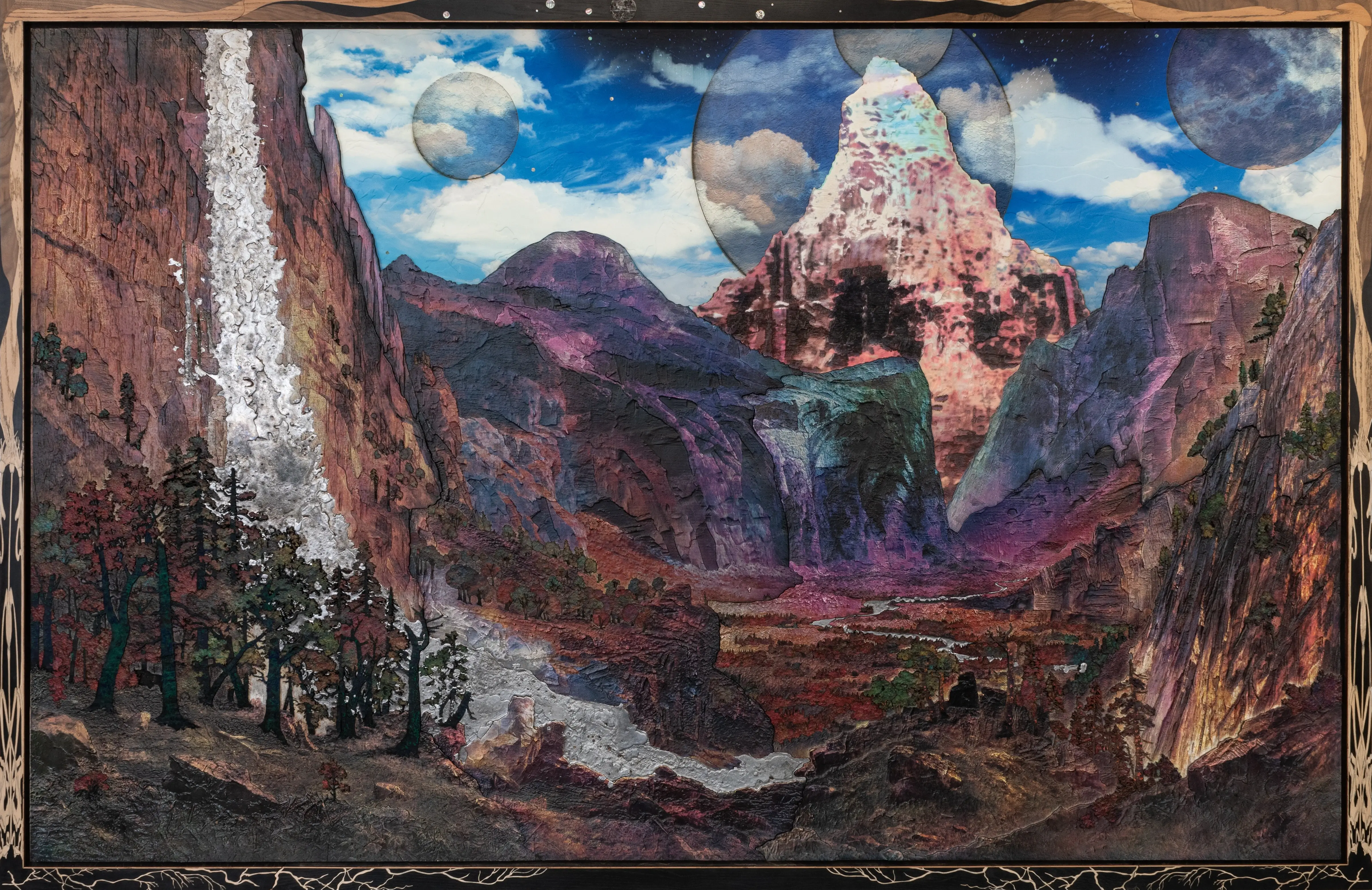
Matthew Day Jackson is a painter, sculptor, draftsperson, and photographer based in Brooklyn, New York. Through his multifarious practice, which includes collage, drawing, video, performance, and installation, Jackson engages with a wide range of subjects, from the historical and scientific to the futuristic and fantastical.Utilizing notably American images and iconography associated with LIFE magazine, the Apollo 11 Moon landing, the West, the atomic bomb, and more, he examines how an inexorable pursuit of a false utopia throughout American history has shaped notions of national identity. Jackson brings his own experience and embodiment of the past and present to the fore of his practice. At the core of his work is a deep interest in finding similarities within binaries and dichotomies, particularly the simultaneity of beauty and horror.The research and experimentation central to Jackson’s process undermines mythologies of artistic genius connected to his signature style. Utilizing a variety of traditional, industrial, and found materials—including Formica, molten lead, and scorched wood—the artist synthesizes new meanings and interpretations. The artist’s materials are equally as significant as the conceptual underpinnings of his works, and Jackson often aims to upend viewers’ initial expectations and impressions. His layered, complex works invite questions of medium, materiality, and meaning that are answered through sustained consideration, analysis, and interrogation.Reflecting Jackson’s long-standing interest in art historical allusions and intersections between physical and digital modes of art making, his most recent works investigate the complexities and ambiguities of authorship. Drawing parallels between the political and social issues of the 19th century and those of the present day, Jackson focuses on memory as a core component of his practice. Using a semi-autonomous laser process which imbues colors and forms with an otherworldly feel, the artist mines the history of landscape painting, making connections to the conventions of landscape in science fiction, film, and literature, in which the strange and familiar converge.
